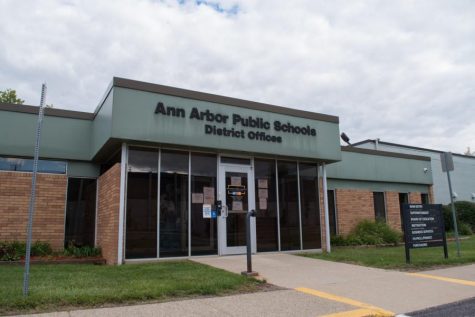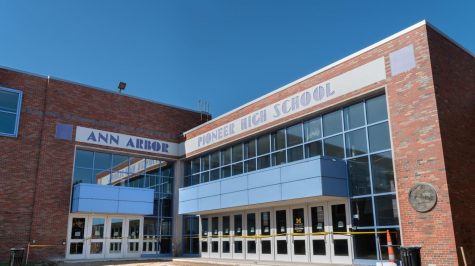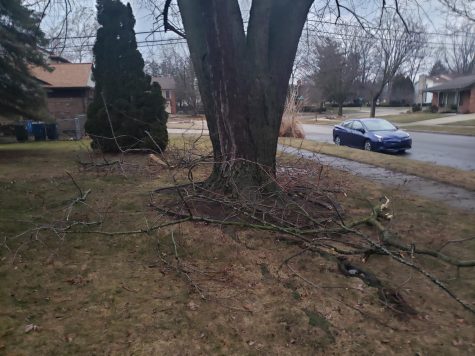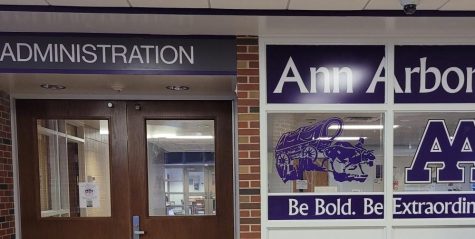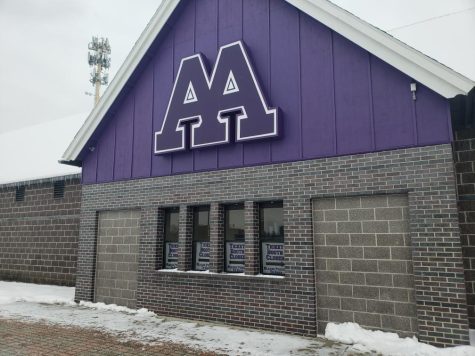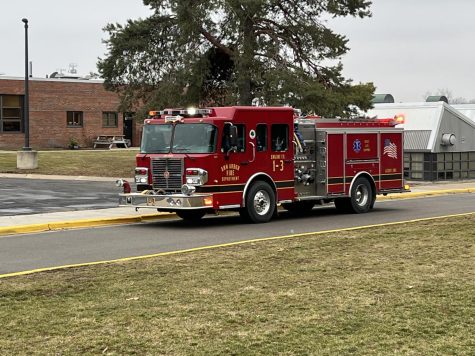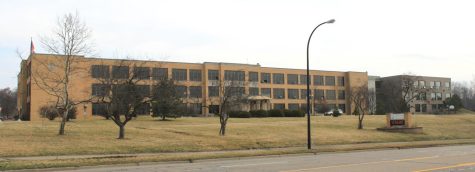Affordable housing remains a challenge in Ann Arbor
The rising cost of Ann Arbor houses can be attributed to several factors, impacting many. Photo from Pixabay free use.
For years, Ann Arbor residents and city officials have tried to address the lack of affordable housing in Ann Arbor. The latest development in this saga was the passage of a Proposal C in November, which will collect new tax money for the construction of subsidized housing. It’s a good step, city leaders say, but affordable housing remains one of the most prominent and difficult issues the city faces.
“For me, it really has become one of the most important issues that we’re dealing with,” said Ann Arbor City Council member Julie Grand (D-Ward 4). “I would say it’s probably the most challenging issue that we’re dealing with on council and as a community.”
According to a study by the Pew Research Center, Ann Arbor is the eighth most economically segregated city in the country. Grand said much of this can be attributed to housing issues.
Many of the housing issues in Ann Arbor are due to a simple economic problem—the demand is greater than the supply–causing prices to rise as a result of competition. The substantial demand for housing in Ann Arbor is largely created by the University of Michigan.
“The university is the single largest employer in the city including both the medical facilities and educational facilities,” said Jennifer Hall, executive director of the Ann Arbor Housing Commission. “Both of these organizations continue to grow and continue to hire more staff, which drives competition for housing.”
Hall adds that the presence of U-M creates a situation in which a large volume of housing is needed in a very small area.
“U-M continues to increase student enrollment, which is a population that has the strongest demand for living on or near campus, within the city limits,” she said. “That is why housing around campus is even more expensive than housing a mile or two away from campus.”
Housing is expensive to build, which makes it hard for the demand to be met. It does not matter whether it is townhouses, condos, apartments, or single family homes.
“New construction will never be affordable to lower income levels unless it is subsidized with public resources,” said Hall.
Ann Arbor’s housing prices are substantially higher than the rest of the country. The average price of a single family home in Ann Arbor, according to Zillow estimations, is around $390,000. The average price of a single family home for the entire country is $295,000,
Council member Grand said that zoning and land use laws also contribute to supply problems.
“We’re an incredibly expensive place to live. We don’t have land use and zoning that supports being able to build housing easily,” she said. “We have policies in place that make it very easy for people to oppose housing.” Chief among these are zoning laws that prohibit multi-family structures such as apartment buildings, duplexes, and even high rises.
A 2015 study conducted by the Washtenaw County Office of Community and Economic Development found Washtenaw County needed to add an additional 3,139 affordable non-student rentals by 2035 in order to create more equitable housing opportunities in the county area.
Hall, director of the housing commission, said the demand is now even greater. “In August 2020 we had over 4000 people apply to our waitlist for our affordable housing programs,” she said. “We do not have 4,000 subsidized housing units or vouchers. We have roughly 150 to 200 openings each year.”
To even be on target for the 2015 plan, 700 new units would have needed to have been built over the past five years. Since the plan was adopted though, only 90 units have been built. The county has also lost 800 units of affordable housing over these five years because developers have preferred to forgo city deals in favor of the booming city real estate market.
Proposal C, which passed this November, is expected to address this lack of progress. The proposal increases property taxes in a progressive manner, up to .001 percent of the value of the property. For the average homeowner in Ann Arbor this will amount to an extra $125 to $140 dollars per year. The 20-year tax is estimated to bring in around $6.5 million in the first year.
Many say that this was a much needed initiative. The proposal passed with over 70% support.
“We have been trying to do things for years to have an impact and create more affordable housing but what it came down to, and why we went for the proposal, was because those things were not getting us to the goals we were trying to achieve,” said Amanda Carlisle, director of the Washtenaw Housing Alliance.
Not all residents feel this way. Jeff Hayner (D-Ward 1), a member of the Ann Arbor City Council, said that he has heard from people who say they wish that the city “had exhausted every possible approach” before they ask everyone who lives here to pay. “We need to do a real good accounting of what we’re spending our money on and what we’re getting for it,” he said.
Now that the millage has passed, more concrete plans can start being made.
“I have been working with other public entities and professional organizations to analyze city owned properties to determine whether it is financially feasible to develop these properties and if so, what to build and how to finance the projects,” said Hall. “Now that the millage has passed, we can move forward with development of these properties with higher confidence.”
Hall estimates that funding from the proposal will allow them to build 1500 new units on city owned properties. It will also subsidize existing privately owned units, in order to make them more affordable.
Expensive housing prices also force many who work in Ann Arbor to live outside of the city. The city’s housing commission estimates that over 80,000 people commute into the city for work everyday.
“We’ve heard a lot from the chamber of commerce in the county saying that businesses are finding it hard to find employees because of the high cost of living here,” said Carlisle.
Even if businesses can find employees to commute into Ann Arbor it can create logistical problems.
“For Literati, a local bookstore, many of the employees get to work from Ypsilanti using the bus,” said Carlisle. “The bus schedule was not lining up with their work hours, and so Literati had to factor this into their operation.”
Carlisle said that the commute that many employees have to make impacts the hospital systems especially.
“It’s a big concern at the hospital’s systems,” she said. “Many of the folks keeping their operations going cannot afford to live in the community and so are commuting long distances. What happens if their car breaks down or they can’t get to work on time? That created a lot of problems in the ecosystem.”
Teachers who are not able to live in the city from the housing prices and commute are also affected. “Before virtual, the biggest challenge was just simply commuting,” said Tyler Vess, a teacher at Pioneer High School who lives in East Dearborn. “It’s a good two hours of my day just gone.” He adds that bad weather and having to drop his child off at school makes it even harder.
Monica Brennan, a teacher at Angell Elementary School, moved to Farmington Hills over a year ago.
“When it came time to move, we were deciding whether to move closer to work or farther away,” she said. “Truthfully, it was just really slim pickings in Ann Arbor and around the area.”
Similar to Vess, she also said that the commute is a real challenge. “By the time you get in traffic it’s an hour or more one way,” said Brennan. “So that’s another two hours I have to commit to my work day. That’s challenging because when you have family, you start to want a better balance between work life and family life.”
Brennan said that if she lived closer to the school, she could also be more involved in the community.
“I’ve always wanted to live close to the school, so I could go to karate matches or soccer games,” she says. “I’ve always kind of dreamed of being that teacher that could be on the sidelines of a soccer game a few times a year to cheer on my students. It is just one of those things I had to let go of.”
The high cost of housing in Ann Arbor could potentially pose a hiring problem for Ann Arbor Public Schools as well.
“Being a teacher, there are jobs all over the state, there is a school one block away from me,” says Brennan. “It does make me think, is the hour commute worth it? I love Angell, I just adore the families, the community, and the building, so that has kept me there. But as our daughter gets older, it is going to be harder to justify such a long commute.”
As affordable housing efforts continue, Grand said that the future is encouraging.
“What I’m hoping is that the conversation is tipping towards understanding what a serious issue this is,” she said. “The needs are always going to be greater than what we can provide, but I’m cautiously optimistic that we are going to start to turn a corner here.”



